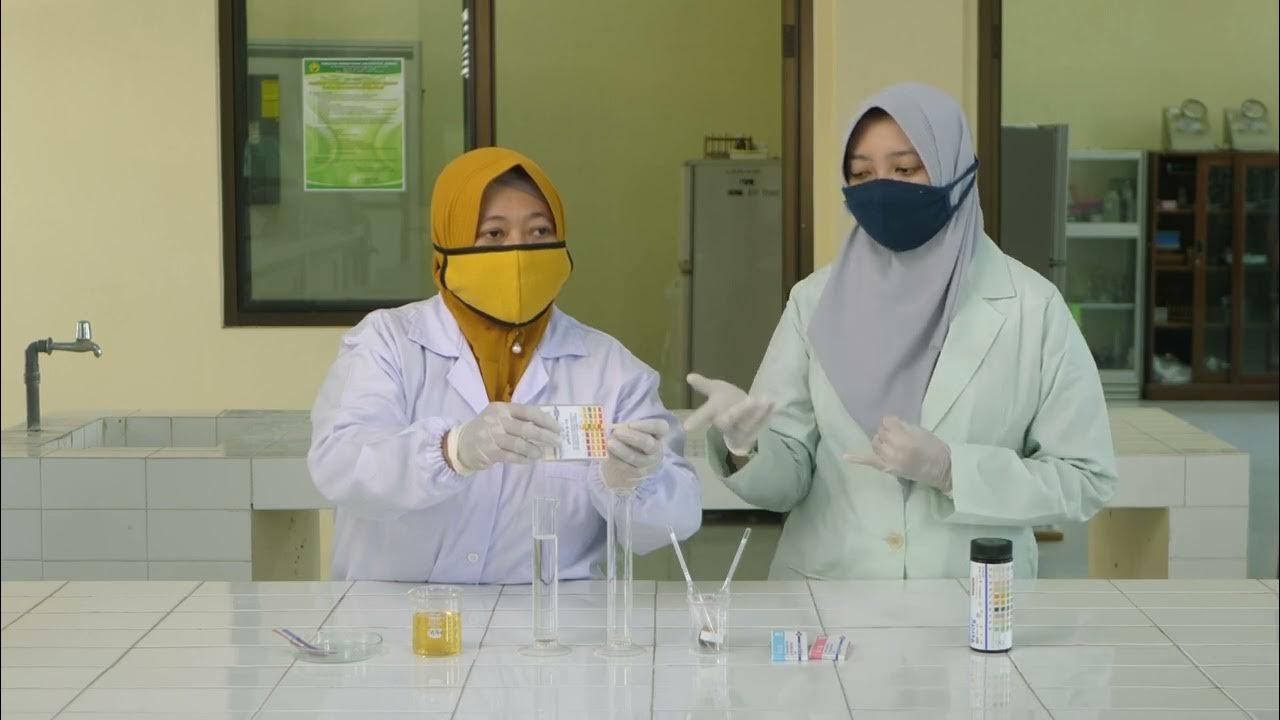#KimiaAnalitik PERTEMUAN 1 - MATERI UJI KUALITATIF
Summary
TLDRThis script provides a detailed overview of a laboratory practical session focused on various chemical analysis methods. It covers flame tests for identifying elements based on flame color, borax bead tests for metal identification, and the use of litmus paper to detect ammonium ions. The script also explores techniques for identifying anions, including the use of soda extract and various reagents for precipitating and confirming specific ions. The session emphasizes step-by-step instructions, equipment, and observations, offering a comprehensive guide for students engaged in practical chemistry experiments.
Takeaways
- 😀 The main goal of the experiment is to identify elements based on their flame color, observed either directly or through cobalt glass.
- 😀 Different elements emit unique flame colors when heated in a Bunsen burner flame, allowing for their identification.
- 😀 The materials used in the flame test include a Bunsen burner, chemical glass plate, spatula, and nichrome wire, with samples such as CaOH2, K2SO4, and CuSO4.
- 😀 The procedure for the flame test involves heating a nichrome wire, dipping it in concentrated HCl, and then testing various samples to observe the flame color.
- 😀 The flame test reveals distinct colors for different elements, such as green for Cu, red for Sr, red-brown for Ca, and violet for K.
- 😀 The goal of the borax bead test is to identify elements based on their flame color in a borax bead, under both reducing and oxidizing conditions.
- 😀 The materials for the borax bead test include Bunsen burner, chemical glassware, and borax, while the procedure involves heating the bead and observing the color changes.
- 😀 For iron (Fe), the borax bead turns yellow when heated, while copper (Cu) turns blue. When cooled, the iron bead remains yellow and copper remains blue.
- 😀 The preliminary test for ammonium (NH4+) ions involves using litmus paper to identify the presence of the ion by its color change from red to blue.
- 😀 The anion test focuses on identifying specific anions in a sample based on their reactions, with reagents like AgNO3 and HNO3 used to detect sulfate and nitrate ions.
- 😀 The separation and identification of cations in a sample can be achieved through group separation, with tests for groups 1, 2, and 3, and specific reagents used for further identification.
Q & A
What is the purpose of the flame test in the laboratory?
-The purpose of the flame test is to identify elements based on the flame color they produce when exposed to a Bunsen flame, either directly or through cobalt glass.
What are the common materials used in the flame test?
-The materials used in the flame test include a Bunsen burner, a glass watch plate, a spatula, nichrome wire, and chemical samples such as CaOH2, K2SO4, SrO2, CuSO4, and concentrated HCl.
What is the significance of using cobalt glass in the flame test?
-Cobalt glass is used in the flame test to filter out specific wavelengths of light, allowing for clearer observation of flame colors that correspond to different elements.
How do you perform the borax bead test, and what does it identify?
-To perform the borax bead test, a nichrome wire is dipped in borax and heated in a Bunsen flame. The test identifies elements based on the color of the borax bead in both reducing and oxidizing flames, whether hot or cold.
What is the role of litmus paper in preliminary tests for identifying ammonium ions (NH4+)?
-In preliminary tests for ammonium ions, the litmus paper changes color from red to blue when exposed to the sample after adding NaOH. This indicates the presence of NH4+ ions, which can decompose to release ammonia gas.
What are the necessary steps in the test for ammonium cations (NH4+)?
-The steps include adding NaOH to a sample suspected to contain NH4+, heating the solution, and observing the color change of red litmus paper to blue, which confirms the presence of NH4+.
What is the test for acetate ions (CH3COO-) and how is it performed?
-The test for acetate ions involves adding zinc acetate (Zn(CH3COO)2) and concentrated H2SO4 to a sample. If a characteristic vinegar-like smell is produced, the sample contains acetate ions.
What is the procedure for separating cations in a sample and identifying them?
-To separate cations, the sample is dissolved, and different reagents are added to specific reaction tubes. For example, HCl is used to precipitate Group 1 cations, which are then tested for the presence of Pb2+, Hg2+, or Ag+.
How do you test for the presence of sulfate (SO4 2-) and nitrate (NO3-) anions?
-Sulfate is tested by adding BaCl2 to a solution, which forms a white precipitate if SO4 2- is present. Nitrate is tested by adding H2SO4 and diphenylamine to a sample, forming a blue ring if NO3- is present.
What are the key differences between Group 1 and Group 2 anion identification tests?
-Group 1 anions, such as chloride and bromide, are identified through precipitation reactions with silver nitrate (AgNO3). Group 2 anions, such as sulfate and carbonate, require different reagents and testing methods, like barium chloride for sulfate and sodium carbonate for carbonate.
Outlines

This section is available to paid users only. Please upgrade to access this part.
Upgrade NowMindmap

This section is available to paid users only. Please upgrade to access this part.
Upgrade NowKeywords

This section is available to paid users only. Please upgrade to access this part.
Upgrade NowHighlights

This section is available to paid users only. Please upgrade to access this part.
Upgrade NowTranscripts

This section is available to paid users only. Please upgrade to access this part.
Upgrade Now5.0 / 5 (0 votes)





